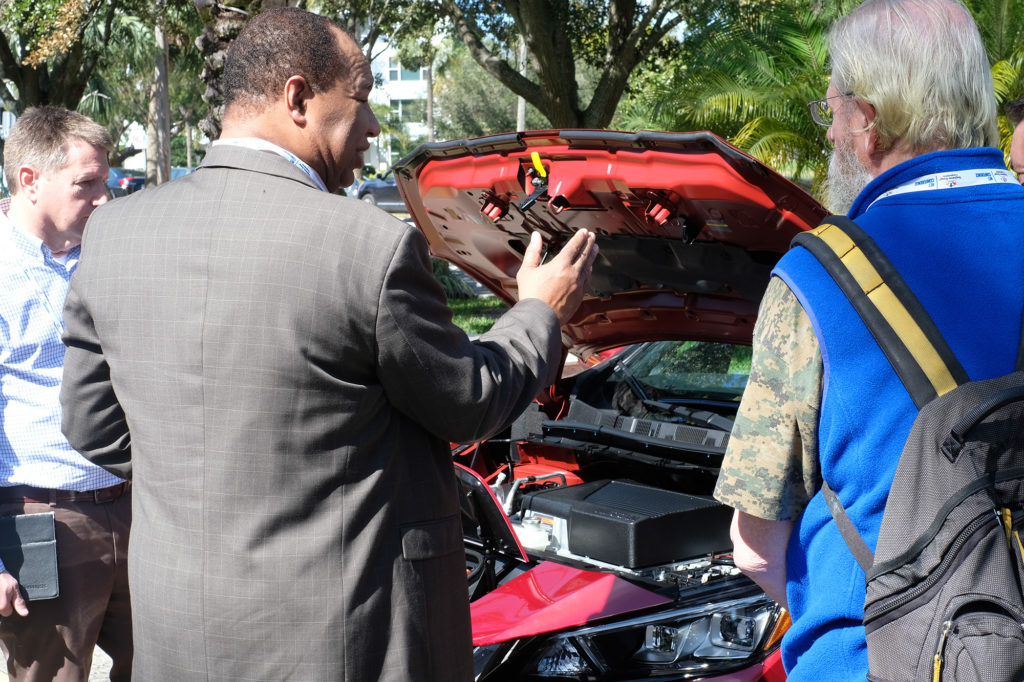
ST. PETERSBURG, Fla.—If you think electric cars are just a lot of hype, you’re about to be left on the side of the road.
“This is a big opportunity for us. In fact, I think it’s the largest opportunity for us to grow load since the invention of air conditioning,” said Alan Shedd, Touchstone Energy® Cooperatives’ director, energy solutions.
“There are a lot of electric vehicles available now and even more on the way,” with automakers poised to invest some $90 billion over the next five years, he said.
Two of those companies were at Touchstone Energy’s NET 2018 to make the case that EVs are the real deal.
“This is a market that is coming,” said Cornelius Willingham, regional EV strategy and fleet business development manager at Nissan.
“I would bet the vast majority of you have a smartphone. In 2005, none of you did. There are very few flip phone holdovers anymore, and there will be very few gasoline-powered vehicle holdovers in that same length of time,” said Willingham.
For one thing, EVs are way cheaper to run.
“You’re talking about driving a vehicle at 1.5 to 1.7 cents per mile compared to 12 to 16 cents per mile driving a gasoline vehicle,” said Willingham. “Who in here couldn’t use an 80 to 90 percent reduction in their fuel costs?”
The 2018 Nissan Leaf can go 150 miles on a full charge. Chalk that up to better batteries—which also happen to be cheaper. Five years ago the price was around $1,400 a kilowatt-hour, said Willingham. “It’s dropped into the $300 to $500 range,” with one battery maker hoping to get it to $100 per kWh by year’s end, he said.
And it’s not just cars. Tesla is working on its electric semi-truck.
“We have two versions: a 300-mile range and a 500-mile range,” said Patrick Bean, Tesla’s associate manager of policy and business development. That works out nicely, because, he pointed out, that “about 80 percent of freight in the U.S. goes 200 miles a day,” meaning the trucks can make their deliveries and then return to base.
And when it comes to the electric semi-trucks, “You probably won’t have public charging as much as you see with passenger vehicles, but more of a charge on site,” Bean said. “That’s a good opportunity to charge at night. Or you can charge when you’re unloading.”
Michael W. Kahn is a staff writer at NRECA.